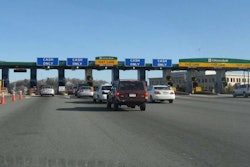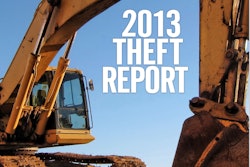The latest surface transportation bill, “Moving Ahead for Progress in the 21st Century (MAP-21)” required that the U.S. Department of Transportation (DOT) and the Federal Highway Administration (FHWA) develop public-private partnership (P3) transaction model contracts for the most popular type of P3s for transportation project.
Q: When were public-private partnerships fist used in the United States?
A: The first turnpike was chartered in 1972 and became known as the Philadelphia and Lancaster Turnpike in Pennsylvania.
This led to the development of the “Core Toll Concession Model Contract Guide,” published by the FHWA on Feb. 6, 2014. After public comments, the agency published a revised guide that reflected the public commentary. Additional draft guides are also expected for publication, with the latest, “Model Public-Private Partnership Core Toll Concession Contract Guide,” at publication guide published on Sept. 10. (For a downloadable PDF of the “Model Public-Private Partnership Core Toll Concession Contract Guide,” click here.
P3 Terms to Know
- Concession is a long term lease of public facilities to a private party (concessionaire) – Greenfield and Brownfield facilities.
- A Special Purpose Vehicle (SPV) is a legal entity created to fulfill narrow, specified tasks – isolates the financial risks from the parent company or companies.
- Leveraging is the degree to which an investor or business is using borrowed money (debt). If a project is leveraged at 70/30, 70 percent debt and 30 equity.
- Debt is a bond or loan, with an obligation to pay interest and principal at a later date –obligation has payment priority over equity – includes Private Activity Bonds (PABs) and Transportation Infrastructure and Finance Act (TIFIA) loans.
- Equity defines ownership interest in a corporation – requires a higher internal rate of return than debt holders as equity interest is riskier. It can be lost in certain instances.
- The Internal Rate of Return is the percentage return on investment – weighted average cost of capital (WACC) of project vs. return on equity
- Greenfield – new facility.
- Brownfield – existing facility.
- Hybrid – extension or expansion of existing facility.
- Availability Payments – payments made by the public sector sponsor based on particular milestones or facility performance standards.
- Shadow Tolls – payments to the Concessionaire or private sector partner based on volume of traffic on a facility.
Source: Federal Highway Administration Office of Innovative Program Delivery Program Development Team
The guide presents key concepts for the structuring and development of legal contracts for highway transportation Public-Private Partnerships (P3) in the United States, according to a report in the Federal Register. “It is part of the broader effort by the FHWA to promote understanding of P3 transactions, which will include a document similar to this guide on availability payment contracts used in P3 transactions. The guide is designed to provide industry-standard concepts, relevant common tools and mechanisms, and situational examples applicable to P3 transactions,” the Federal Register report notes. (For the original report, click here.)
FHWA says through the guide it is seeking “to create a better understanding of P3 market terms and possible contract structures for use in the consideration and development of P3 transactions.”
The P3 transactions “represent a potential option for state and local governments as a form of procuring the development, financing, construction, and operation, and maintenance of transportation facilities, including highway projects,” FHWA notes in the P3 guide. “The value to the Department in a P3 transaction is the transfer of costs and subsequent risk related to the design, build, financing, operations, and management of the project to the developer.”
In return, the developer is rewarded with an agreed-upon compensation – such a toll revenues or availability payments for services performed – for a prescribed term. FHWA says that whether a P3 transaction is attractive to the Department and offers value-for-money for the public needs to be assessed on a case-by-case-basis. Implementation would be up to the state or local level agency responsible for the asset.
Better Roads has examined the lengthy P3 guide and has pulled out some of the key points and topics to provide a snapshot of what you need to know. For the full document, click here for a downloadable PDF.
Guide objectives
Based on public and stakeholder input from the listening session, FHWA noted it has determined that “a set of prescriptive, standardized contracts for use in P3 transactions would not be acceptable or desirable to all state DOTs and other public agencies in the United States that are interested in using P3 for highway projects. The objective…[is] that [the] guide will assist in educating public agencies and stakeholders on key issues in highway projects procured as P3 transactions, the trade-offs, and ways to provide investment. Using the knowledge base of highway projects previously undertaken as P3 transactions, this guide attempts to educate agencies and stakeholders that may be only beginning to approach P3 transactions, while still providing relevant information to more sophisticated and experienced state and local transportation agencies.”
The guide’s overall objectives include the following:
- Increase state and local agency understanding of standard P3 market terms and possible contract structures, including the rationale behind such terms and structures.
- Enhance state and local agency understanding of market/investor perspectives, goals, and objectives.
- Present and analyze current legal and regulatory dynamics relative to highway projects procured as P3 transactions.
- Present and analyze current tools and mechanisms used in Concession Agreements for P3 transactions.
- Incorporate international best practices, where relevant.
- Encourage discussions with state and local agencies and stakeholders (via Webinar discussions to be conducted following the publication of this guide).
Guide summary chapter-by-chapter
The guide gives a specific analysis for state and local transportation agency personnel on the following topics related to highway projects procured as P3 transactions, focusing on toll road concessions:
Chapter 1: Focuses on the following:
- Tolling Regulation.
- Benefit-Sharing.
- Supervening Events.
- Change in Law.
- Changes in Equity Interests.
- Defaults, Early Termination, and Compensation.
- Handback.
Chapter 2: Tolling Regulation – Topics discussed include toll collection, user classification, toll rate setting, toll collection system and administration, enforcement of collections, management of demand risk and use of revenue funds.
Chapter 3: Benefit-Sharing – Topics discussed include the setting of revenue-sharing triggers financial modeling and structuring of triggers within the P3 model, treatment of operating costs, capital costs, grants, the effects of refinancing on revenue-sharing and other timing issues.
Chapter 4: Supervening Events – Topics include the role of insurance in mitigating supervening risks, a definition of supervening events, and the types of contractual relief generally granted in supervening events.
Chapter 5: Changes in Equity Interests – Topics include the definition of a change in ownership, example contractual provisions related to a change in ownership, permitted and prohibited changes, and participant concerns.
Chapter 6: Changes in Law – Topics include the concerns of parties, unforeseeable changes in law and relevant considerations, tax-related issues, and compensation due to changes in law.
Chapter 7: Defaults, Early Termination and Compensation – Topics include events related to default by the Developer and the Department, cure periods and termination rights of both parties in the event of a default, as well as all issues related to compensation for early termination.
Chapter 8: Handback – Topics include handback requirements, inspections and reserve accounts.
The report also points that that the following “relatively consistent” themes:
1. The developer generally bears any negative financial impact associated with any unforeseen change in federal law on the basis that (unlike with respect to other transportation sectors (e.g., aviation) regulation of highways is largely devolved down to State government, the private business community is as well (if not better) placed as any Department to address any pending Change in Law, and (subject to the terms of the toll rate schedule) an increase in toll rates may afford some level of “hedge” against any negative impact of such a Change in Law.
2. With respect to any unforeseen change in a non-Federal law, the Department only bears any negative financial impact associated with such Change in Law to the extent that it is a “Discriminatory Change in Law” (see Section 6.5 below for a discussion of the definition of Discriminatory Change in Law).
3. The negative financial impact associated with any “Nondiscriminatory Change in Law” are generally borne by the developer, except that with respect to changes in sales tax rates or exemptions (whether of general application to suppliers or not), protection is often afforded to the developer. (For more information, refer to Section 6.6 of the document).














